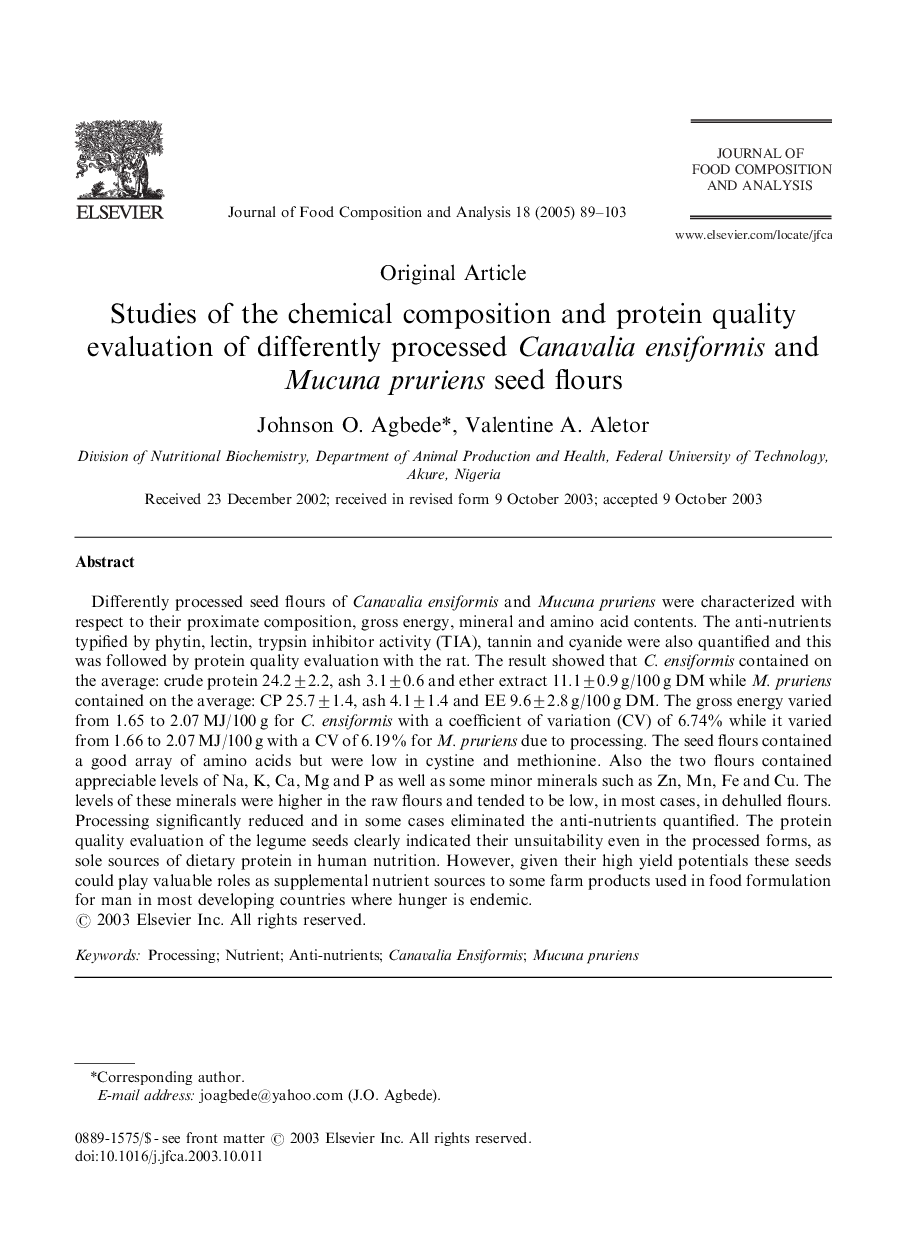| Article ID | Journal | Published Year | Pages | File Type |
|---|---|---|---|---|
| 10553068 | Journal of Food Composition and Analysis | 2005 | 15 Pages |
Abstract
Differently processed seed flours of Canavalia ensiformis and Mucuna pruriens were characterized with respect to their proximate composition, gross energy, mineral and amino acid contents. The anti-nutrients typified by phytin, lectin, trypsin inhibitor activity (TIA), tannin and cyanide were also quantified and this was followed by protein quality evaluation with the rat. The result showed that C. ensiformis contained on the average: crude protein 24.2±2.2, ash 3.1±0.6 and ether extract 11.1±0.9 g/100 g DM while M. pruriens contained on the average: CP 25.7±1.4, ash 4.1±1.4 and EE 9.6±2.8 g/100 g DM. The gross energy varied from 1.65 to 2.07 MJ/100 g for C. ensiformis with a coefficient of variation (CV) of 6.74% while it varied from 1.66 to 2.07 MJ/100 g with a CV of 6.19% for M. pruriens due to processing. The seed flours contained a good array of amino acids but were low in cystine and methionine. Also the two flours contained appreciable levels of Na, K, Ca, Mg and P as well as some minor minerals such as Zn, Mn, Fe and Cu. The levels of these minerals were higher in the raw flours and tended to be low, in most cases, in dehulled flours. Processing significantly reduced and in some cases eliminated the anti-nutrients quantified. The protein quality evaluation of the legume seeds clearly indicated their unsuitability even in the processed forms, as sole sources of dietary protein in human nutrition. However, given their high yield potentials these seeds could play valuable roles as supplemental nutrient sources to some farm products used in food formulation for man in most developing countries where hunger is endemic.
Related Topics
Physical Sciences and Engineering
Chemistry
Analytical Chemistry
Authors
Johnson O. Agbede, Valentine A. Aletor,
